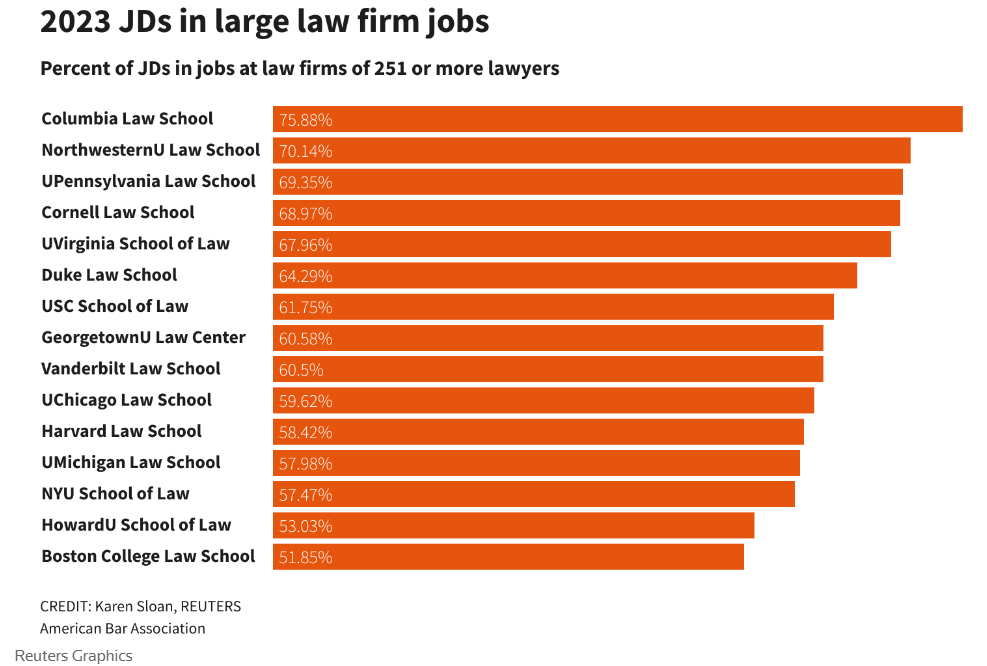Columbia Law School snagged the top spot among U.S. law schools for having the highest percentage of 2023 graduates who landed large law firm jobs, according to new employment data from the American Bar Association.
Nearly 76% of the school’s juris doctor graduates took jobs at firms of 251 or more lawyers within 10 months of leaving campus, the data shows.
Columbia unseated Cornell Law School, which held the top spot for large firm hiring in both 2021 and 2022. Cornell had the fourth-highest Big Law hiring rate for the class of 2023, at 69%. A Cornell Law spokesperson declined to comment on Friday.

Northwestern University Pritzker School of Law came in at No. 2 for Big Law hiring, with 70% of its 2023 JDs taking those jobs, while the University of Pennsylvania Carey Law School sent 69% of it graduates to large firms. With Cornell at No. 4, the University of Virginia School of Law rounded out the top five with 68% of its class going into Big Law.
ABA Data
The ABA on Monday released a wealth of data on the class of 2023’s employment outcomes, and the numbers revealed a strong job market for those graduates. Among the 30,160 newly minted JDs last year, 85.6% landed full-time, permanent jobs that either require bar passage or for which a JD provides an advantage within 10 months of leaving campus—the highest rate over the past decade.
Reuters analyzed the data to determine which law schools had the highest percentage of 2023 graduates who landed jobs at firms of 251 or more lawyers. Most of these large firms focus on representing companies in transactions and litigation, and competition for associate talent has been fierce among them. Starting associate pay at many of these firms has climbed to $225,000 a year.
Recent law firm hiring data suggests that 2024 and 2025 law graduates will have a harder time landing those lucrative law firms associate positions. The class of 2024 is significantly larger than its predecessor, meaning more students are competing for jobs. And NALP found that summer associate recruiting hit an 11-year low last summer—a strong indication that firms are being conservative about headcount.
This article first appeared on Reuters. Read original here

